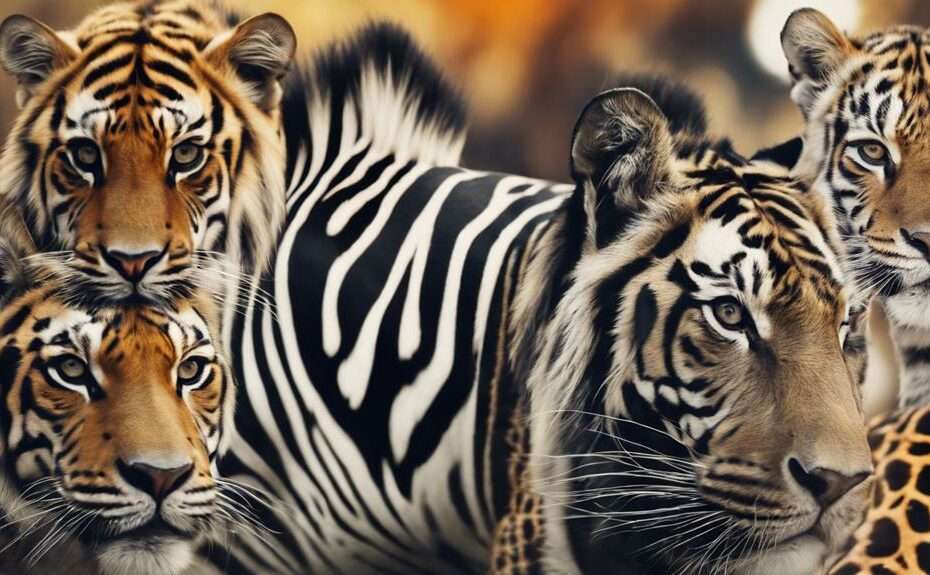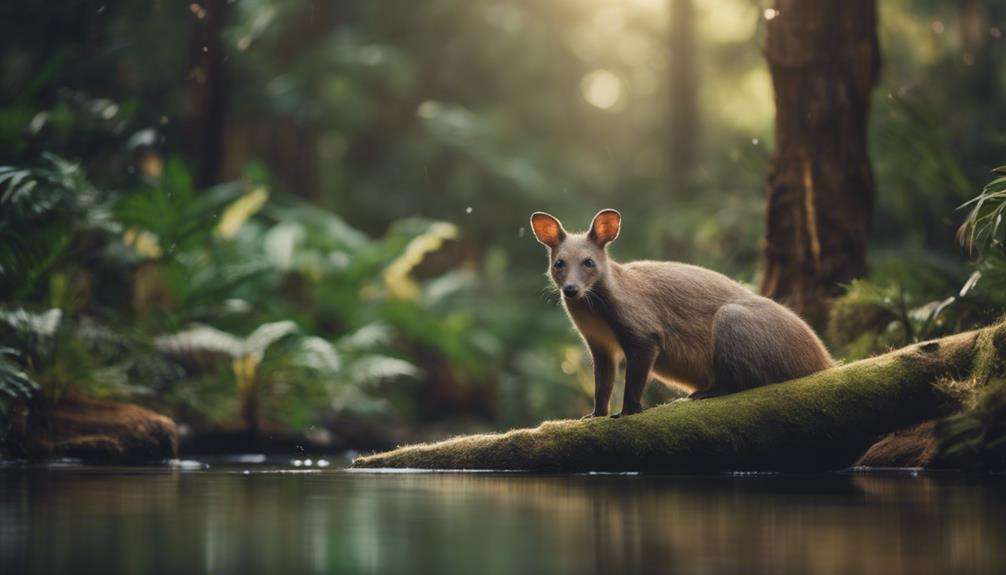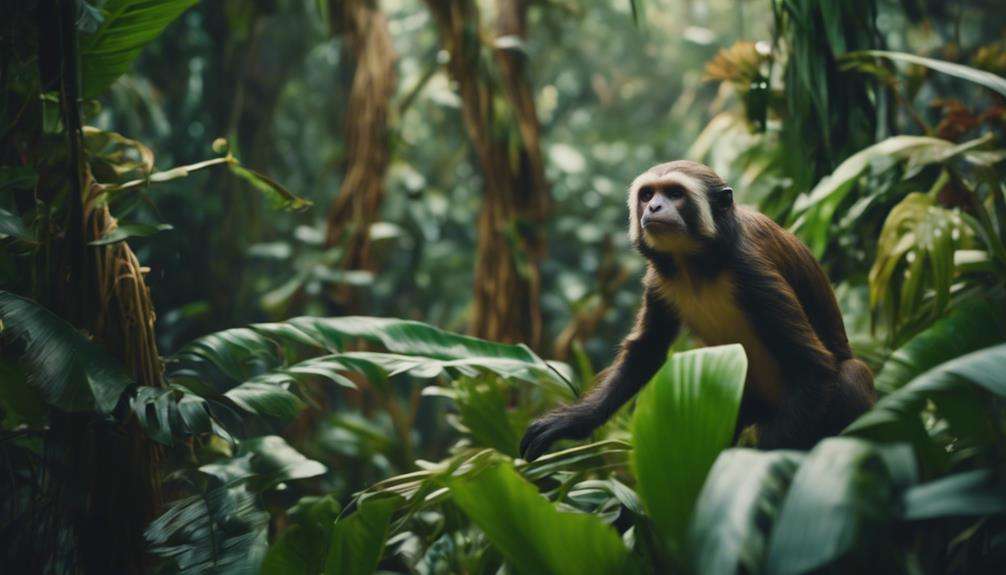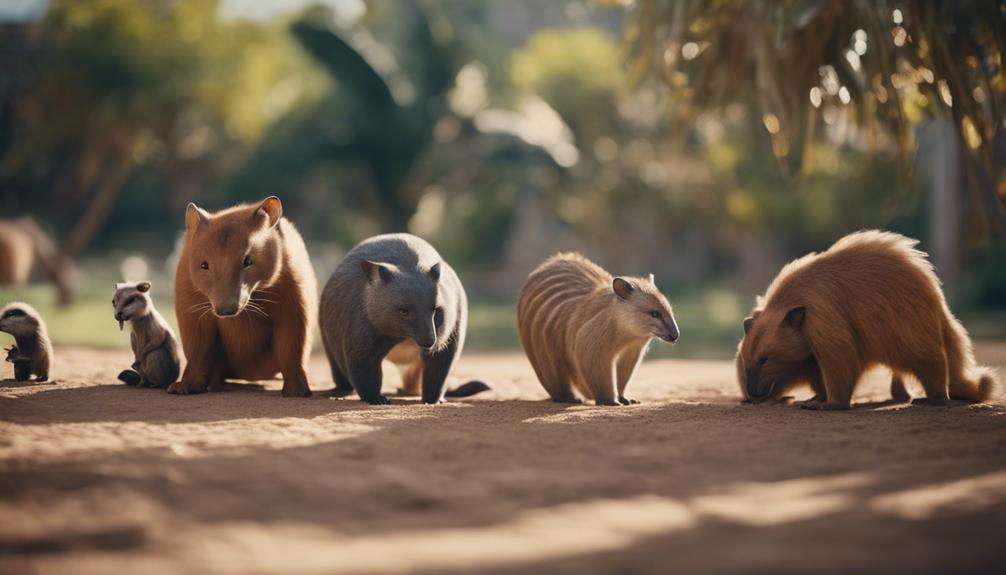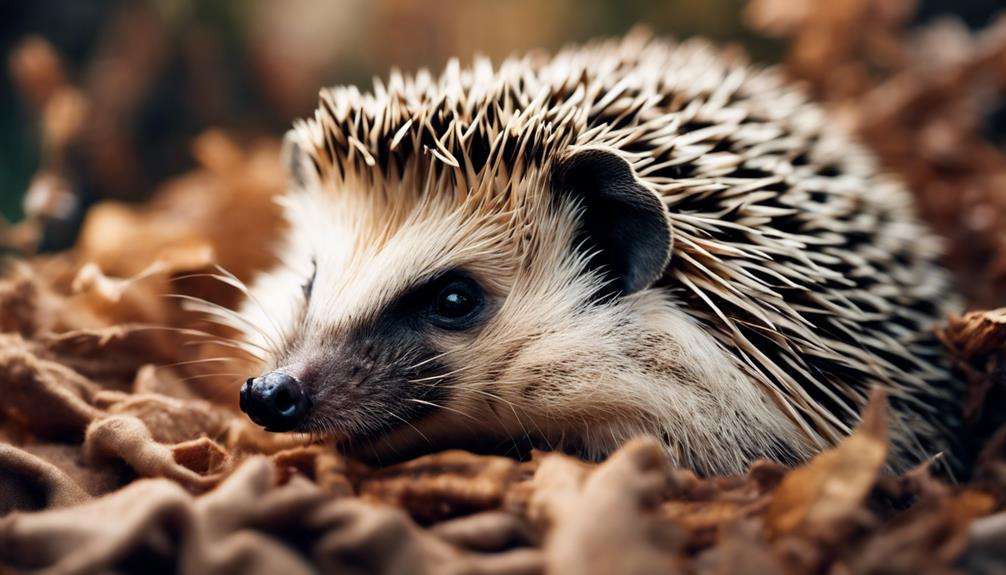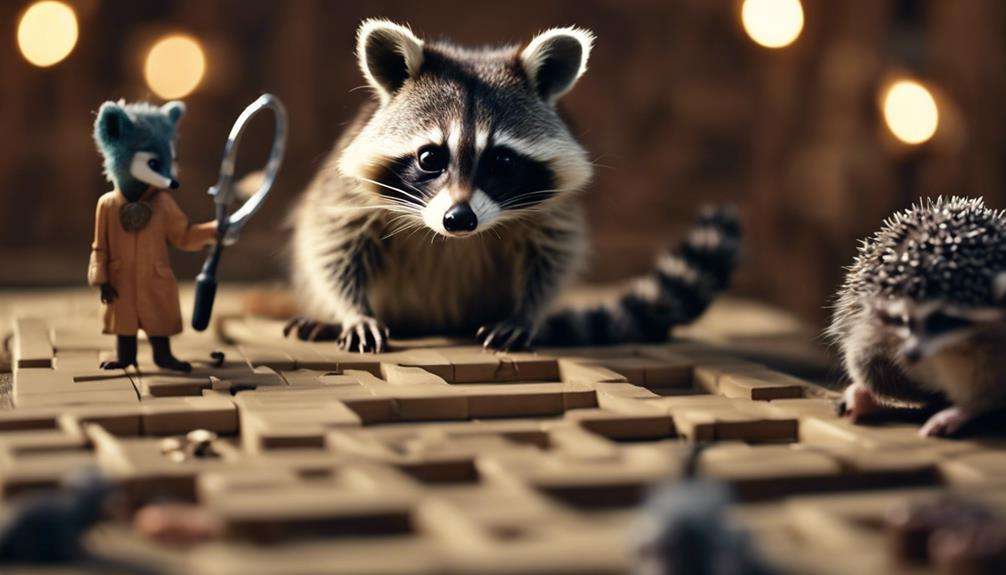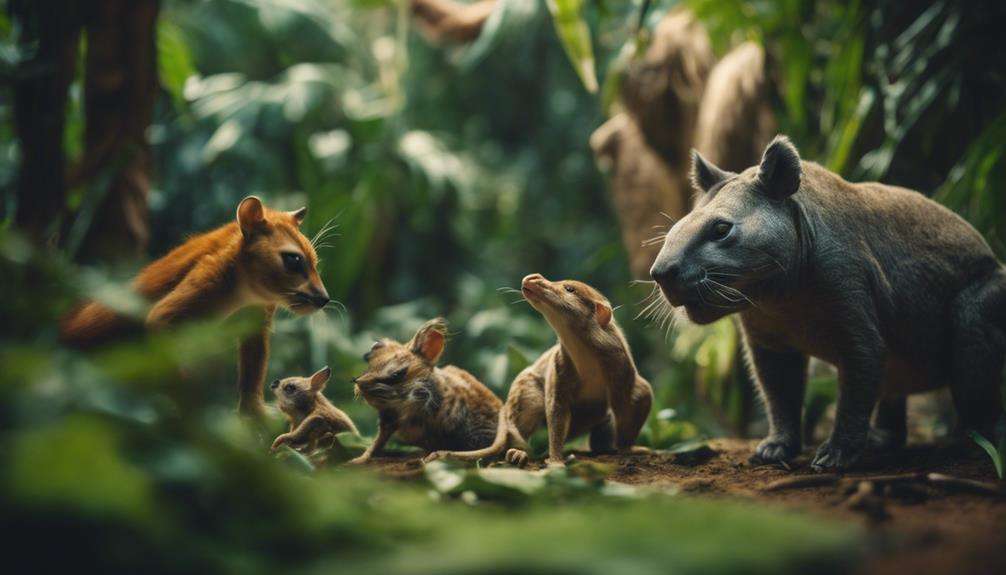As you dive into the world of mammals with striking fur patterns, you'll discover a tapestry of nature's artistry woven into the coats of these fascinating creatures.
From the elegant marbling of Snow Leopards to the quirky zigzag patterns of zebras, each species holds a unique story within its fur.
So, prepare to embark on a journey through the wild, where patterns not only dazzle the eye but also serve a vital purpose in the survival of these remarkable animals.
Key Takeaways
- Fur patterns provide camouflage and survival advantages for tigers, clouded leopards, snow leopards, and Malayan colugos.
- Giraffes, zebras, and okapis use fur patterns for social communication and recognition within their herds.
- Conservation efforts are crucial for protecting species like Iberian lynxes and okapis with distinct fur patterns.
- Fur patterns aid adaptation and functionality in diverse environments for giraffes, snow leopards, and cross foxes.
Striped Beauty: Tigers With Unique Fur Patterns
In the dense jungles of Asia, tigers proudly display their distinctive orange fur adorned with mesmerizing black stripes, serving both functional and aesthetic purposes in their daily lives. These unique fur markings, characterized by their stripes, play a crucial role in the visual communication of tigers within their habitats. Each tiger's stripe pattern is as individual as a fingerprint, allowing for easy identification among their kind.
The stripes on a tiger's coat serve more than just a cosmetic purpose; they provide excellent camouflage in the dense vegetation where they hunt. These patterns help break up the tiger's outline, making it easier for them to stalk prey without being detected. Furthermore, the visual distinctiveness of their striped fur patterns aids in social communication and identification within the species.
Among the big cats, tigers truly stand out due to their striking appearance, making them one of the most visually captivating mammals in the animal kingdom.
Speckled Wonder: Clouded Leopards With Intricate Fur
Proudly displaying a coat adorned with intricate cloud-like spots and stripes, clouded leopards captivate with their visually striking fur patterns. These elusive cats, native to Southeast Asia, boast fur that not only serves as a thing of beauty but also provides them with effective camouflage in the dappled light of the forest canopy. The intricate fur patterns of clouded leopards help them blend seamlessly into their natural habitat, making them skilled ambush predators.
With their exceptional climbing abilities, clouded leopards spend a significant amount of time in trees, where their fur patterns further aid in breaking up their outline, allowing them to stalk prey with stealth and precision. Classified as vulnerable due to habitat loss and poaching, these magnificent creatures stand out among big cats for their unique fur patterns. The clouded leopards' fur is a testament to the wonders of nature, combining both beauty and functionality in a truly mesmerizing way.
Marbled Elegance: Snow Leopards and Their Striking Coats
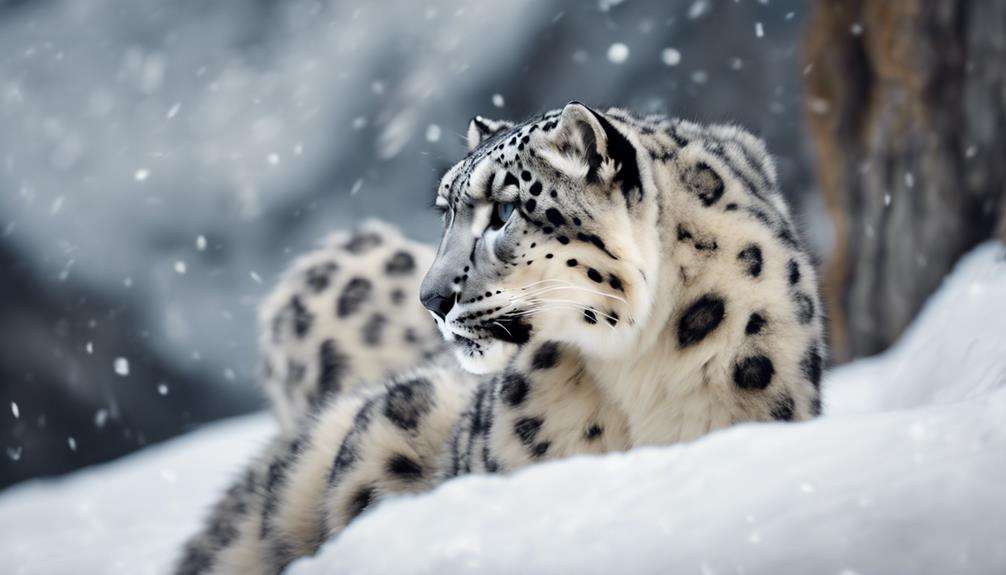
Snow leopards exhibit a remarkable elegance with their marbled fur patterns that serve as effective camouflage in their rugged mountainous habitats. Their coats feature a mix of light and dark spots, creating a unique spotted coat that aids in blending into rocky terrain and snowy landscapes. These patterns vary based on the geographic location of the snow leopards, allowing them to adapt to different environments seamlessly. The intricate stripes and spots on their fur not only provide camouflage but also add to their beauty, making them one of the most captivating big cats in the wild.
- The marbled fur patterns of snow leopards help them camouflage effectively in their mountainous habitats.
- Snow leopards' coats feature a mix of light and dark spots, aiding in blending into rocky and snowy surroundings.
- The variation in fur patterns among snow leopards is influenced by their geographic locations, allowing for better adaptation to diverse environments.
Dappled Charm: Giraffes and Their Distinctive Spots
With their distinct coat pattern featuring irregular patches of light brown or orange, giraffes showcase a dappled charm that plays a crucial role in their survival and social interactions in the wild.
The fur of giraffes is adorned with spots that are unique to each individual, acting as a form of natural camouflage in their habitat. These spots help giraffes blend seamlessly with the dappled sunlight and shadows of their environment, providing them with essential protection from predators.
Not only do the patterns on their fur aid in avoiding detection, but they also serve as a means of social communication within giraffe herds. By recognizing the specific spot patterns of their peers, giraffes can establish and maintain social hierarchies, identify family members, and form cohesive bonds.
The intricate spots on giraffes not only contribute to their striking appearance but also play a vital role in their survival and interactions within the wild.
Patchwork Perfection: Okapis and Their Unusual Fur
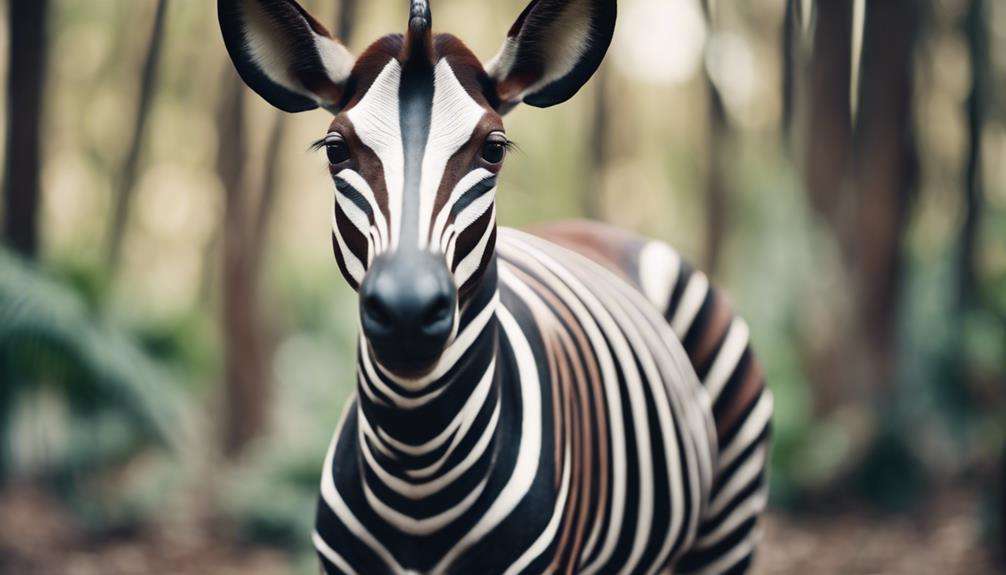
Okapis exhibit a distinctive fur pattern characterized by reddish-brown fur with white stripes on their legs, resembling a patchwork quilt. This unique fur pattern serves a crucial purpose in the dense rainforest environment where okapis reside. The stripes help the okapis blend seamlessly into their surroundings, providing them with effective camouflage.
- Blending Into the Forest Floor: The white stripes on the okapis' legs play a vital role in helping them merge with the dappled sunlight and shadows of the forest floor.
- Camouflaging Amongst Foliage: The patchwork-like pattern created by the reddish-brown fur and white stripes enables okapis to hide amidst the vegetation, making them less conspicuous to predators.
- Survival Strategy: Okapis, being solitary and secretive animals, rely heavily on their unique fur pattern for survival, allowing them to move undetected in their habitat.
In essence, the striking fur pattern of the okapis isn't just aesthetically pleasing but also a fundamental aspect of their survival strategy in the wild.
Spotted Grace: Jaguars Sporting Stunning Fur Designs
Jaguars possess striking fur patterns characterized by unique black rosettes that aid in their camouflage within forested environments. Their coat colors, ranging from yellow to dark brown, further enhance their ability to blend seamlessly into their surroundings, making them effective hunters.
These intricate and beautiful fur markings play a crucial role in the jaguars' survival within their ecosystem.
Unique Jaguar Patterns
Stunning fur designs adorning jaguars include unique black rosettes set against a backdrop ranging from yellow to dark brown. These intricate patterns serve a crucial purpose in the jaguar's survival in the wild, aiding in camouflage and hunting strategies.
The black rosettes help jaguars blend seamlessly into their forested habitats, making them nearly invisible to unsuspecting prey. Each jaguar's coat pattern is distinct, allowing for individual identification and facilitating research efforts.
The combination of black rosettes on a yellow to dark brown coat isn't only visually striking but also functionally adaptive, enabling these big cats to move stealthily through dense vegetation without being easily detected.
Camouflage Adaptations
With their intricate black rosettes set against a backdrop of varying shades, jaguars showcase remarkable camouflage adaptations in their fur patterns. The black rosettes on their golden coats help jaguars blend seamlessly into the dappled light and shadows of their forested habitats.
This spotted coat provides effective camouflage, aiding jaguars in stalking prey and evading potential threats. The strategic placement of these black rosettes breaks up the jaguar's outline, making it challenging for predators and prey to spot them among the dense foliage.
Jaguars' unique fur patterns not only serve as a form of camouflage but also contribute to their individual identities, with each jaguar possessing a distinct pattern, showcasing nature's beauty and adaptation for survival.
Swirled Magnificence: Malayan Colugos and Their Beautiful Fur
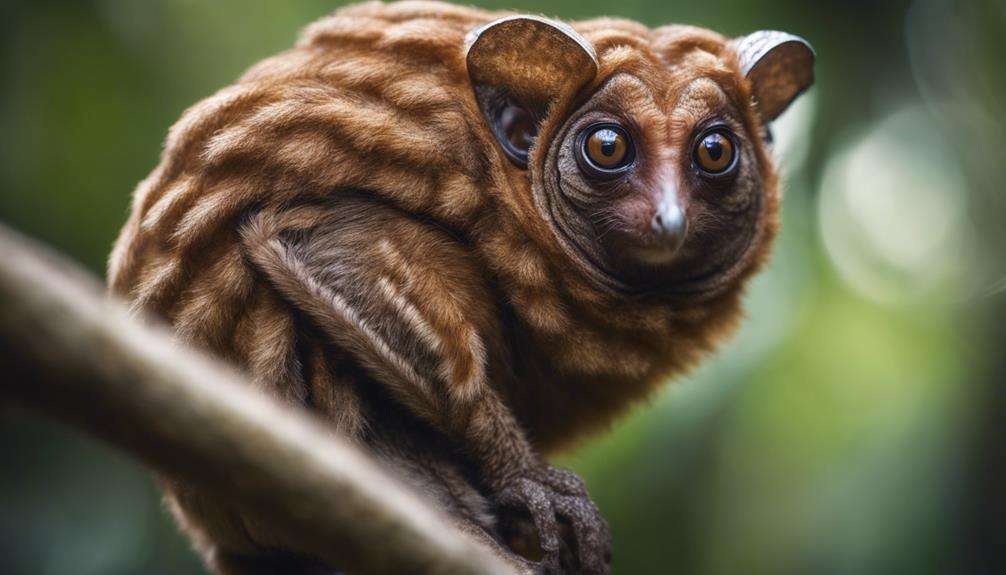
In the dense rainforest habitat, Malayan colugos exhibit a swirled magnificence through their beautiful fur patterns that provide exceptional camouflage. The intricate designs on their fur enable these creatures to blend seamlessly into their surroundings, offering them protection from potential predators. Here are some key points to consider about the stunning fur patterns of Malayan colugos:
- Camouflage Perfection: The fur patterns of Malayan colugos help them blend into tree bark and leaves with remarkable precision, almost rendering them invisible to the naked eye.
- Stealthy Movement: Their unique fur not only aids in camouflage but also enhances their ability to move stealthily through the dense rainforest canopy, allowing them to navigate their environment with ease.
- Adaptability: The variation in fur patterns among individuals provides a range of camouflage options suited to different environments, showcasing the adaptability of these remarkable creatures in their natural habitat.
Checkered Splendor: Iberian Lynxes and Their Striking Patterns
Iberian Lynxes exhibit distinct fur patterns characterized by black spots and stripes against a light background. These patterns play a crucial role in their survival in the wild. As critically endangered species, with less than 900 individuals left, Iberian lynxes rely on their fur for camouflage in their scrubland habitats. The black spots and stripes break up their outline, helping them blend seamlessly into the surrounding vegetation, making them more effective hunters.
Due to their solitary and elusive nature, spotting an Iberian lynx in the wild is a rare and remarkable experience. These cats are masters of stealth, using their fur patterns to move undetected through their environment.
Conservation efforts are actively working to protect and increase the population of these beautiful creatures. Habitat preservation and breeding programs are essential components of these efforts, aiming to ensure the long-term survival of the Iberian lynx and maintain the delicate balance of their ecosystem.
Zigzag Delight: Quirky Zebra Stripes and Patterns
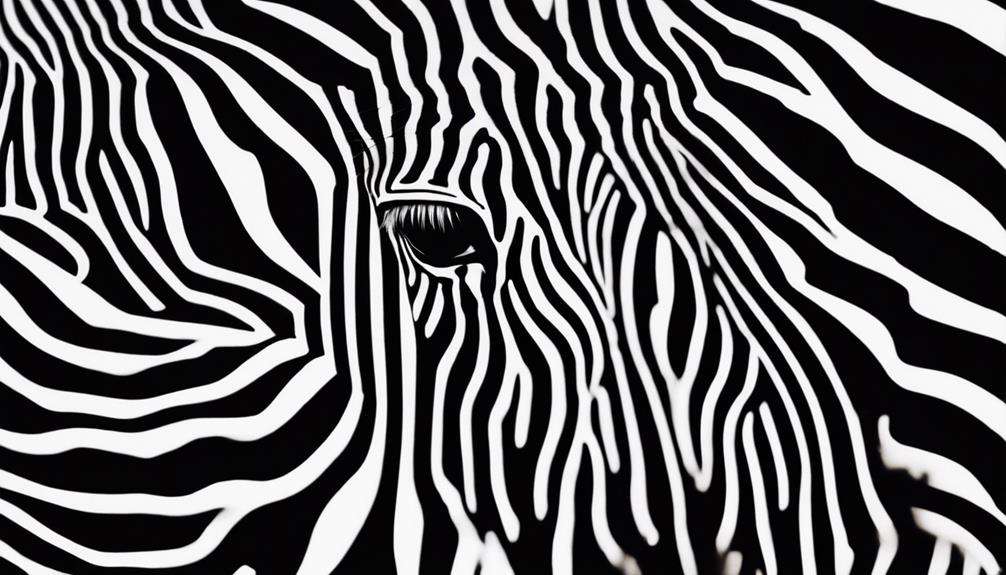
Zebra stripes have evolved to be unique to each zebra, aiding in their camouflage within the savannah. The black and white patterns create visual confusion for predators, making it challenging for them to target individual zebras.
Varying in thickness and orientation, these distinctive stripes also help zebras regulate body temperature and recognize each other within the herd.
Zebra Stripe Evolution
Evolutionarily intriguing, the distinctive patterns adorning zebras' coats serve multifaceted purposes in their survival strategies. Zebras have evolved unique stripe patterns for survival in the wild:
- Camouflage: Zebra stripes vary in thickness and orientation, blending effectively with their natural surroundings, making it difficult for predators to spot them.
- Individual Recognition: Each zebra's stripe pattern is as unique as a fingerprint, allowing for easy identification within the herd, facilitating social interactions and group dynamics.
- Confusion of Predators: The optical illusions created by zebra stripes make it challenging for predators to track their movements, increasing their chances of avoiding detection and predation.
These evolutionary adaptations showcase the remarkable ways in which zebra stripes contribute to their survival in the animal kingdom.
Unique Coat Patterns
With their intricate and quirky zigzag patterns, the coat designs of zebras have evolved to enhance their camouflage and survival strategies in their African habitats. Zebra stripes aren't only visually striking but also serve a crucial purpose in the wild.
The black and white striped coats create optical illusions, making it challenging for predators to single out an individual zebra within a herd. Each zebra's unique striped coat acts as a form of camouflage, allowing them to blend into the grasslands and avoid detection.
These patterns are as distinct as human fingerprints, aiding in both identification within the herd and temperature regulation in the hot climates where zebras reside. The evolution of these striped coats showcases nature's brilliance in adapting to environmental challenges.
Camouflage in Savannah
In the savannah, the intricate zigzag patterns of certain mammals' fur serve as highly effective camouflage strategies. These striped coats, like the zebra stripes, play a crucial role in survival through pattern recognition. Here's why:
- Optical Illusions: Zebra stripes create visual confusion in the savannah, making it challenging for predators to single out one zebra.
- Individual Recognition: Each zebra has a unique stripe pattern, akin to human fingerprints, aiding in easy identification within the herd.
- Blend into the Herd: The black and white stripes help zebras merge with the group, making it harder for predators to target a specific zebra for an attack.
These patterns not only provide camouflage but also contribute to temperature regulation and individual distinction in the vast savannah landscape.
Mottled Marvel: Cross Foxes and Their Unique Fur Display
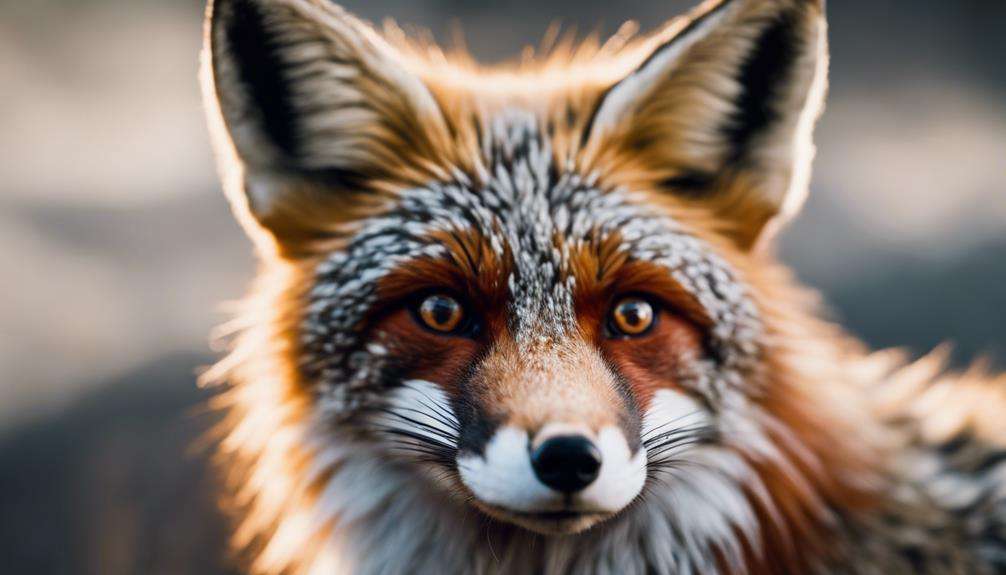
Cross foxes exhibit a distinctive fur pattern characterized by a dark stripe down their back and across their shoulders, setting them apart from other red fox color morphs. This mottled marvel showcases a blend of red, black, and at times silver fur, creating a striking appearance that aids in camouflage within their natural habitats.
The name 'cross fox' originates from the cross-like pattern that adorns their shoulders, adding to their unique allure. Genetic variations play a crucial role in determining the intensity and distribution of this captivating fur pattern, contributing to the individuality of each cross fox. These genetic differences result in a spectrum of fur patterns among cross foxes, making each one a distinctive sight in the wild.
Their beautiful and eye-catching fur patterns not only serve a functional purpose in camouflaging them but also make them stand out as one of the most visually appealing color variants of the red fox species.
Frequently Asked Questions
What Mammals Have Cool Patterns?
When you think about cool patterns in mammals, you can't ignore the iconic Zebra stripes, the intricate snow leopard spots, and the distinctive giraffe patches. These striking fur patterns serve various functions, from camouflage to social signaling.
What Animal Has the Best Camouflage?
When discussing the animal with the best camouflage, consider the octopus. Its remarkable ability to change color and texture showcases advanced camouflage techniques. This adaptation is a product of natural selection, allowing the octopus to blend seamlessly with its surroundings.
What Animal Disguises Itself?
In nature, animal mimicry provides an evolutionary advantage through adaptive coloration. This survival strategy involves visual deception, aiding in predator-prey dynamics. Creatures disguise themselves to blend in, protecting from harm and increasing chances of survival.
What Is the Funniest Looking Mammal?
When it comes to quirky critters and whimsical wildlife, the funniest looking mammal is the Aye-aye. With its large eyes, bat-like ears, and unique finger, this creature stands out among the hilarious hiders of the animal kingdom.
Conclusion
In conclusion, the world is a canvas of nature's artistry, with mammals showcasing a stunning array of fur patterns. From the striped beauty of tigers to the dappled charm of giraffes, each species embodies a unique masterpiece of design.
Like a living tapestry woven by the hand of evolution, these striking fur patterns not only serve functional purposes but also captivate the eye with their beauty and diversity.
Nature truly is a gallery of wonder and awe.
